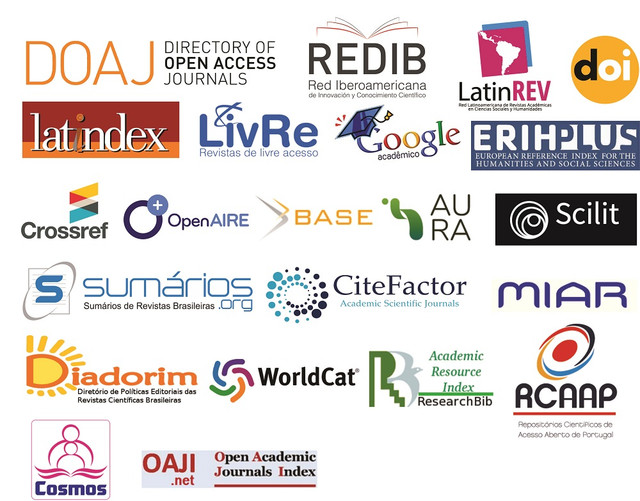THE INFLUENCE OF VIRTUAL REALITY ON THE COGNITIVE REHABILITATION OF PATIENTS WITH CRANIOBRAIN INJURY: A CASE STUDY OF ‘LUCAS’
DOI:
https://doi.org/10.59087/biofarma.v4i1.39Keywords:
Virtual reality, cognitive rehabilitationAbstract
This study presents a case of cognitive rehabilitation of Lucas, a 34-year-old patient who suffered a traumatic brain injury (TBI) in a car accident. Using virtual reality (VR) technology integrated with traditional neuropsychology techniques, Lucas participated in 12 sessions over three months. The intervention focused on improving executive functions, attention and memory. Research developed by the Biofarma Study Center corroborates the effectiveness of virtual reality in maximizing neuroplasticity and cognitive rehabilitation in patients with TBI.
Downloads
References
Bohil, C., Alicea, B. & Biocca, F. Virtual reality in neuroscience research and therapy. Nat Rev Neurosci 12, 752–762 (2011). https://doi.org/10.1038/nrn3122
Kauffman, A. (2004). The Kauffman Assessment Battery for Children. Psychological Assessment Resources. https://doi.org/10.1002/9780470479216.corpsy0486
Platz F, Kopiez R, Lehmann AC, Wolf A. The influence of deliberate practice on musical achievement: a meta-analysis. Front Psychol. 2014 Jun 25;5:646. https://doi.org/10.3389/fpsyg.2014.00646 PMID: 25018742; PMCID: PMC4073287.
Rizzo AS, Koenig ST. Is clinical virtual reality ready for primetime? Neuropsychology. 2017 Nov;31(8):877-899. https://doi.org/10.1037/neu0000405 PMID: 29376669.
Rizzo, A., Koenig, S., & Lange, B. (2023). Clinical virtual reality: The state of the science. In G. G. Brown, B. Crosson, K. Y. Haaland, & T. Z. King (Eds.), APA handbook of neuropsychology: Neuroscience and neuromethods (pp. 473–491). American Psychological Association. https://doi.org/10.1037/0000308-023
Simms, D.C., O’Donnell, S., Molyneaux, H. (2009). The Use of Virtual Reality in the Treatment of Posttraumatic Stress Disorder (PTSD). In: Shumaker, R. (eds) Virtual and Mixed Reality. VMR 2009. Lecture Notes in Computer Science, vol 5622. Springer, Berlin, Heidelberg. https://doi.org/10.1007/978-3-642-02771-0_68
Morina N, Kampmann I, Emmelkamp P, Barbui C, Hoppen TH. Meta-analysis of virtual reality exposure therapy for social anxiety disorder. Psychol Med. 2023 Apr;53(5):2176-2178. https://doi.org/10.1017/S0033291721001690 Epub 2021 May 18. PMID: 34001293; PMCID: PMC10106288.
Ribé-Viñes JM, Gutiérrez-Maldonado J, Zabolipour Z, Ferrer-Garcia M. Efficacy of virtual reality-based exposure therapy for the treatment of fear of flying: a systematic review. The Cognitive Behaviour Therapist. 2023;16:e19. https://doi.org/10.1017/S1754470X23000119
Jang S, Choi J, Oh J, Yeom J, Hong N, Lee N, Kwon JH, Hong J, Kim JJ, Kim E. Use of Virtual Reality Working Memory Task and Functional Near-Infrared Spectroscopy to Assess Brain Hemodynamic Responses to Methylphenidate in ADHD Children. Front Psychiatry. 2021 Jan 21;11:564618. https://doi.org/10.3389/fpsyt.2020.564618 PMID: 33551860; PMCID: PMC7859615.
Zasadzka E, Pieczyńska A, Trzmiel T, Hojan K. Virtual Reality as a Promising Tool Supporting Oncological Treatment in Breast Cancer. Int J Environ Res Public Health. 2021 Aug 19;18(16):8768. https://doi.org/10.3390/ijerph18168768 PMID: 34444513; PMCID: PMC8393836.
Downloads
Published
How to Cite
Issue
Section
License
Copyright (c) 2024 Biofarma - Multidisciplinary Scientific Journal of Biology, Pharmacy and Health

This work is licensed under a Creative Commons Attribution 4.0 International License.
You have the right to:
*Click on the license image above for more details.



